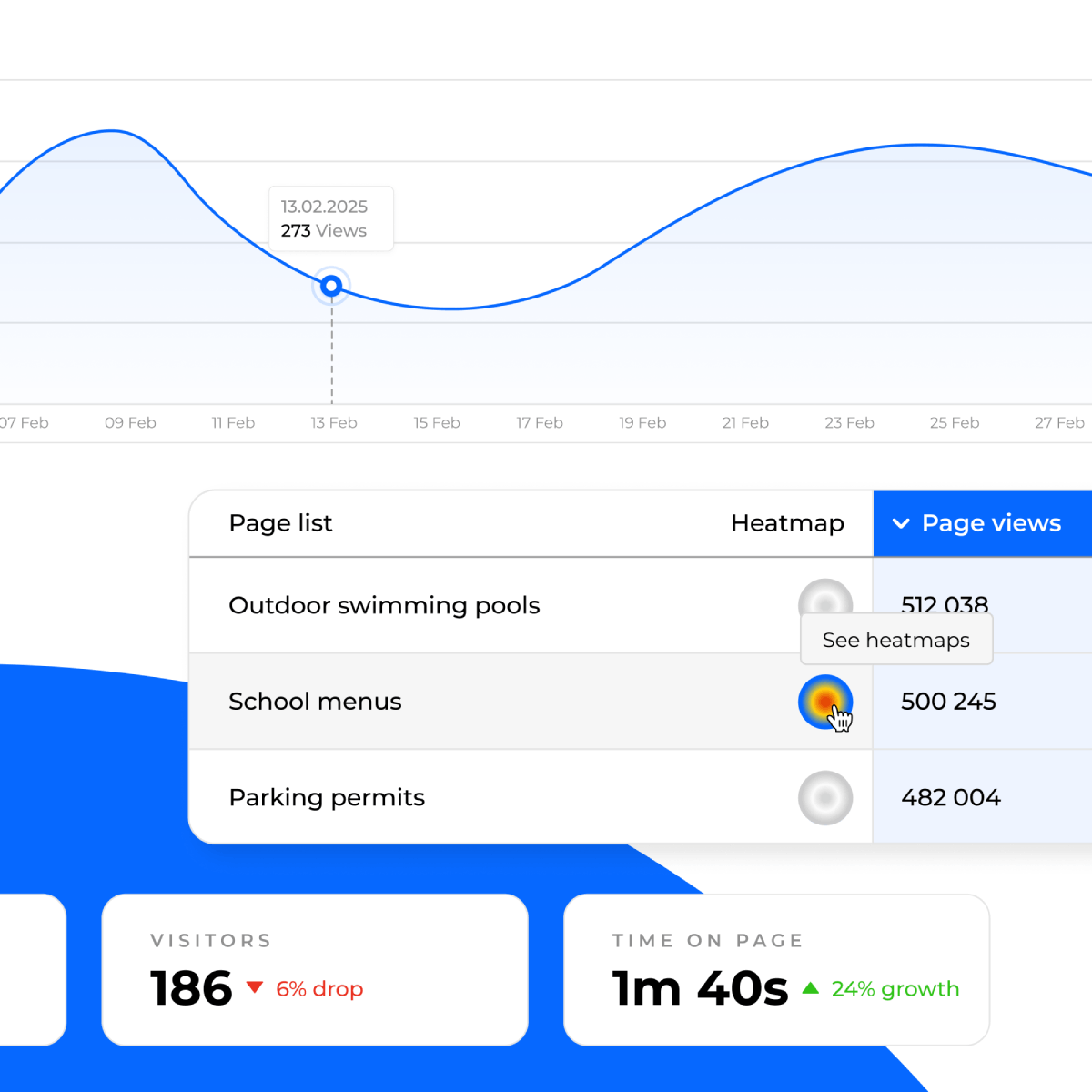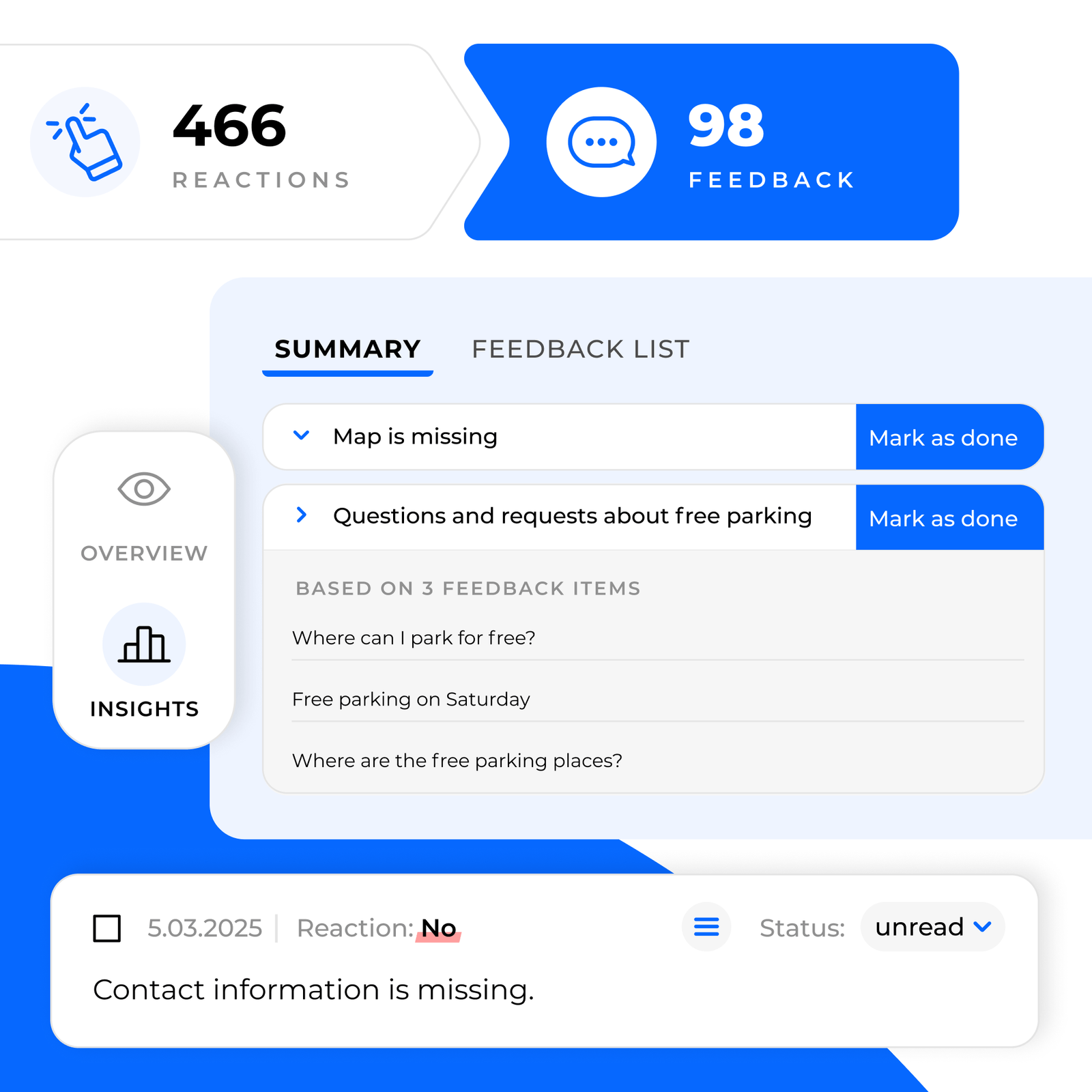Accessible government for every citizen,
every service
Continuous accessibility monitoring that keeps every public website and digital service compliant, inclusive, and trustworthy.

Trusted by hard-working website teams



_logo.png)


Why accessibility matters in government

Citizens face digital barriers
Many citizens still can’t access online services, forms, or portals with assistive technologies.
Barriers in navigation or readability restrict access to essential public information.
Manual audits don’t scale
Government websites change frequently. New pages, updates, and service portals appear daily.
As content changes, those reports quickly become outdated, leaving providers exposed to ongoing risk.
Non-compliance risks real enforcement and loss of trust
The European Accessibility Act and national regulations require WCAG 2.2 AA compliance by 2025.
Failing to meet these standards can result in fines, audits, and reputational harm.
Inaccessible sites exclude citizens
Public-facing content must be usable for everyone.
Poor contrast, broken links, or inaccessible forms prevent equal access to government information and services.
Compliance is complex across systems
Public institutions often manage hundreds of sites and portals across departments and languages.
Manual tracking of accessibility across all of them is inefficient and incomplete.
Public trust depends on access
Accessible digital government services demonstrate transparency and equality.
Inclusion strengthens confidence in public administration and service quality.
How Askem Supports Government
Quality Assurance → WCAG Compliance
Continuous WCAG 2.2 AA monitoring keeps every public website and service portal accessible and compliant.
Askem detects issues in real time across broken links, navigation, and readability so teams can resolve them before they affect citizens.
Reporting follows EN 301 549 and EAA standards, replacing one-off audits with continuous compliance visibility.


Web Analytics → Citizen Journey Insights
Our GDPR-compliant, cookieless analytics show how citizens use public websites and where accessibility barriers appear.
From service pages to application portals, the data helps teams remove friction and build smoother, more inclusive experiences that strengthen trust.
Feedback → Public Experience
Accessible feedback tools let citizens and staff share input or report issues directly from public websites.
Askem turns this input into actionable data, helping institutions improve accessibility up to 30 times faster than traditional review processes.

Compliance and data protection
WCAG 2.2 AA + EN 301 549 monitoring across websites and service portals.
EAA 2025 readiness with audit-ready reporting and compliance documentation.
GDPR-compliant EU data hosting with daily encrypted backups.
Accessibility statement support with pre-filled data and feedback tracking.

FAQs
We ensure that your website is fully accessible by testing for common website issues and comparing them to the relevant standards in your region. It means that your website still works for all users even with the most exacting accessibility requirements.
Yes, we work to the applicable standard, whether WCAG 2.1 AA or 2.2 standards, enforced by the relevant legislation (i.e., The Equality Act in the UK and the European Accessibility Act in the EU).
We monitor your website for accessibility compliance continuously with an easy-to-use dashboard, rather than a one-time audit. It’s also much more affordable than other tools in the market, with a low monthly fee.
Installation is quick and easy – no additional scripts or code are needed on your site. Customers can get the tool up and running on the day they make the purchase!
Yes, but this is doubly important if there is information provided on the website.
Yes.
Yes, it works for an unlimited number of domains, with each domain at a small incremental cost.
Yes, we also provide feedback tools, reaction buttons to ensure website users have found the information they’re looking for, general website analytics services, and more.
Data is stored on database and application servers in the EU. Backups are performed daily. Data is never transferred outside the EU.




